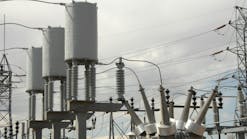Regional and Interregional Transmission Have Significant Economic Value
Existing transmission planning approaches run the risk of understating the economic value of new transmission infrastructure, according to new research from Lawrence Berkeley National Laboratory. In part, this is because roughly half of the marginal value of transmission in providing congestion relief occurs during extreme grid conditions and high-value periods that account for only five percent of hours but are challenging to model and so are often not fully considered in transmission planning.
The new study focuses on one potential benefit of transmission infrastructure—congestion relief. It explores historical grid conditions from 2012 through the first half of 2022, and evaluates the marginal value of transmission in facilitating trade within and across regional boundaries by calculating differences in observed nodal wholesale power prices.
Key findings:
Wholesale power prices exhibit stark geographic differences that, in many cases, are stable over time. Figure 1 summarizes within-region congestion for each Independent System Operator (ISO) region in 2021, comparing annual average nodal wholesale prices with regional median prices; similar spatial patterns are apparent when looking at other years. These differences demonstrate the potential value of transmission in enabling economic trade within regions, alleviating transmission congestion.
Many regional and interregional transmission links have significant potential economic value from reducing congestion and expanding opportunities for trade. Figure 2 shows the average hourly price differences across various pricing hubs and zones in the United States in 2021 (calculated based on locational marginal real-time prices). These data highlight the potential marginal economic value of transmission in relieving congestion and facilitating economic trade. Many links have hourly average pricing differences in 2021 that exceeded $15/MWh—equivalent to $130 million per year for a 1000 MW link. Particularly high value is seen in links originating from the Southwest Power Pool (SPP) and Texas (ERCOT), evidence of the impact of 2021 Winter Storm Uri. But, high congestion is also observed in many other years and regions, as explored more deeply in the new study. In general, interregional links are found to have greater value than within-region links—but many high-value regional links also exist.
The value of transmission is correlated with overall energy prices and varies by region and year. The above figures focus on 2021, but the study evaluates data spanning 2012 to 2022. It shows that the value of transmission tends to be higher when wholesale power prices are higher – as they are in 2022. As well, over the last decade, congestion has generally been getting worse in SPP and ERCOT. For other ISOs, the value of transmission in relieving congestion and facilitating trade has been variable over time, often times spiking when wholesale prices are high or in the event of extreme conditions like the 2014 polar vortex event that impacted northern United States.
Extreme conditions and high-value periods play an outsized role in the value of transmission, with 50% of transmission’s congestion value coming from only 5% of hours. The Berkeley Lab study finds that extreme conditions and high-value periods dominate transmission congestion value. On average across all links shown in Figure 2, 50% of transmission congestion value derives from just 5% of hours. As shown in Figure 3, for some links the proportion is above 80%; it is rarely below 40%. Only a portion of these hours come from designated extreme events identified by FERC and others, meaning that periods that drive transmission value go well beyond historical weather events to also include the many other ‘normal’ drivers for pricing gradations such as uncertain generation or other infrastructure outages, fuel price volatility, forecast errors, and electric demand volatility.
Transmission planners run the risk of understating the benefits of regional and interregional transmission if extreme conditions and high-value periods are not adequately considered. As documented in the broader literature, most new transmission in recent years has focused on reliability enhancements and generator interconnection rather than large-scale new regional or interregional transmission to deliver economic benefits. As well, models that evaluate the economic benefits of transmission often employ simplifications—normal weather, little or no volatility in natural gas prices, perfect foresight, and limited generator or other infrastructure outages. These simplifications result in underestimates of the amount of congestion seen under real-world market conditions. The Berkeley Lab study suggests that such tools may understate by half the marginal value of transmission in providing congestion relief, by underestimating the role of transmission as insurance against the cost of extreme grid conditions and high-value periods that are natural and oftentimes regularly occurring features of actual market operations.
Key Limitations:
The Berkeley Lab study should not be considered definitive in assessing the value of new transmission. First, the analysis is backwards looking, whereas transmission planners need to assess future system needs and conditions. Second, the analysis focuses on just one of the many benefits of new transmission, ignoring all other benefits such as grid resilience improvements or the ability to access new, lower-cost generation resources. Third, the study assesses the marginal value of congestion relief and enhanced trade without analyzing saturation effects that might reduce transmission value or considering other institutional barriers that can create pricing differences across market seams. Finally, the analysis ignores the cost of new transmission—costs that, naturally, must be considered in investment decisions.
Conclusions:
The study finds that many existing transmission planning approaches are likely understating the economic value of new transmission infrastructure. In part, this is because roughly half of the marginal value of transmission in providing congestion relief occurs during extreme grid conditions and high-value periods that are not always adequately modeled or considered by transmission planners. These periods are natural features of actual market operations. As such, the study highlights the need for planners to more comprehensively assess the value of transmission under both normal and extreme conditions.
The new study can be found here: https://emp.lbl.gov/publications/empirical-estimates-transmission.
This work was funded by the U.S. Department of Energy’s Office of Electricity and Office of Energy Efficiency and Renewable Energy.





